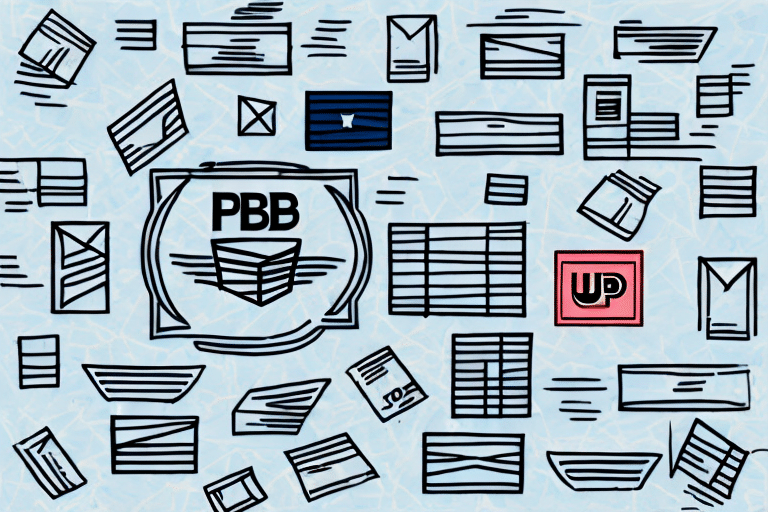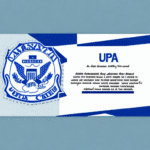Comparing Delivery Speeds of UPS Ground and USPS Priority
When it comes to shipping, various factors must be considered, such as cost, packaging, tracking, and more. However, one crucial element that businesses cannot afford to overlook is delivery speed. Customers expect their orders to arrive promptly, and speedy delivery can differentiate your business from the competition. In this article, we will compare the delivery speeds of UPS Ground and USPS Priority Mail, analyze the pros and cons of each shipping method, and provide tips on choosing the right one for your business needs.
The Importance of Delivery Speed in E-commerce
Fast delivery is a key component of customer satisfaction and loyalty in the e-commerce industry. According to a Statista report, 56% of consumers consider fast shipping as a primary factor when choosing an online retailer. Many consumers are willing to pay extra for expedited shipping options, and some even abandon their shopping carts if they perceive the delivery time to be too slow. In today's digital age, where instant gratification is the norm, businesses need to stay on top of their shipping game or risk losing customers. That's why choosing the right shipping method is essential.
However, delivery speed is not the only factor that affects customer satisfaction in e-commerce. Other aspects such as accurate tracking information, timely updates, and hassle-free returns also play a significant role. Customers want to be informed about the status of their orders and expect transparency throughout the delivery process. They also want to have the option to return products easily if they are not satisfied with their purchase. Therefore, businesses need to focus on providing a seamless end-to-end customer experience to ensure customer loyalty and repeat business.
The Advantages and Disadvantages of UPS Ground Shipping
UPS Ground is the standard shipping option for most businesses. It offers reliable, cost-effective, and trackable delivery to all 50 states, Puerto Rico, and Canada. According to UPS, packages typically arrive within 1-5 business days, depending on the distance and destination. For instance, a shipment from New York to Los Angeles may take up to five business days, while a package sent to a nearby city could arrive the next day.
Another advantage of UPS Ground shipping is that it offers a range of delivery options, such as signature confirmation, insurance, and delivery confirmation. This allows businesses to customize their shipping preferences based on their specific needs. However, it is important to note that these additional services may come at an extra cost.
- Advantages:
- Cost-effective for large and heavy items
- Reliable tracking and delivery confirmation
- Extensive coverage across North America
- Disadvantages:
- Longer transit times compared to expedited services
- Additional services may increase costs
The Advantages and Disadvantages of USPS Priority Shipping
USPS Priority Mail is the fastest and most popular shipping option offered by the United States Postal Service. It delivers packages in 1-3 business days to any address within the US, including PO boxes and military addresses. USPS Priority Mail also provides free package tracking and insurance up to $100, making it a practical choice for small businesses and individuals. However, USPS Priority can be more expensive than UPS Ground, especially for large and heavy items.
Another advantage of USPS Priority is that it offers flat-rate shipping options, which can be cost-effective for certain types of packages. For example, if you are shipping a small, heavy item, you can use a flat-rate box and pay a set fee, regardless of the weight or distance of the package. This can be a great option for businesses that frequently ship similar items.
On the other hand, one disadvantage of USPS Priority is that it may not be the most reliable option for time-sensitive deliveries. While USPS strives to deliver packages within 1-3 business days, there may be delays due to weather, holidays, or other factors outside of their control. If you need a guaranteed delivery date, you may want to consider using a different shipping carrier or upgrading to a more expensive USPS service, such as Priority Mail Express.
- Advantages:
- Faster delivery times (1-3 business days)
- Flat-rate shipping options
- Free tracking and insurance up to $100
- Disadvantages:
- More expensive for large and heavy items
- Potential for delays due to uncontrollable factors
How to Choose the Right Shipping Method for Your Business Needs
When selecting a shipping method, businesses need to consider various factors, such as:
- Cost
- Speed
- Reliability
- Packaging
- Tracking
- Insurance
- Customer preferences
If you need to ship small and lightweight items that require fast delivery, using USPS Priority Mail may be your best bet. If you want to save money on shipping and are okay with longer transit times, then UPS Ground could be a viable option. It's also essential to test multiple shipping methods and carriers to find what works best for your business and customers.
Additionally, consider integrating shipping software that can compare rates and delivery times in real-time, helping you make informed decisions and optimize your shipping strategy based on current data.
The Impact of Distance on Delivery Times: UPS Ground vs USPS Priority
Distance plays a crucial role in determining the delivery times of UPS Ground and USPS Priority shipments. Generally, the longer the distance, the more time it takes for a package to reach its destination. For example, a package traveling from Florida to Hawaii would take longer to deliver than a package going from Florida to Georgia. In general, USPS Priority Mail tends to be faster than UPS Ground for long-distance deliveries due to its nationwide network and strategic partnerships. However, for local deliveries, UPS Ground may be faster due to its extensive ground fleet.
According to the UPS tracking tools and USPS tracking tools, both carriers offer detailed transit time estimates based on distance and other factors, allowing businesses to plan their shipments accordingly.
Understanding Transit Times: A Detailed Comparison of UPS and USPS Delivery Speeds
Both UPS Ground and USPS Priority Mail provide estimated transit times based on the origin, destination, and package weight and dimensions. These transit times are not guaranteed, but they provide a rough estimate of when the package is likely to arrive.
UPS Ground offers a transit time map that shows the estimated delivery days for different zones in the US. Conversely, USPS Priority Mail provides a rate calculator that allows you to enter your ZIP code and package information to get an estimate of the delivery time.
It's crucial to refer to these transit times and plan your shipments accordingly to avoid delays or missed deadlines.
Tracking Your Packages: UPS vs USPS Tracking Systems Compared
Tracking your packages is essential to monitor the delivery status, location, and expected delivery date. Both UPS and USPS offer tracking systems that allow you to track your package in real-time using a tracking number or an order number.
- UPS Tracking:
- Provides detailed information, such as the package's current location, previous stops, and delivery confirmation
- Offers alerts and notifications via email or text
- Integrates with various e-commerce platforms for seamless tracking updates
- USPS Tracking:
- Offers basic tracking information with updates every 12-24 hours
- Provides email or text notifications for status updates
- May not be as detailed as UPS tracking but sufficient for most small businesses
When choosing a tracking system, consider the level of detail and frequency of updates that your business and customers require. Enhanced tracking can improve customer satisfaction by providing transparency and real-time updates.
Comparing Shipping Costs: UPS Ground vs USPS Priority Rates
Shipping costs are a significant expense for businesses that rely on shipping. Both UPS Ground and USPS Priority Mail offer competitive rates, but the cost can vary depending on several factors, such as package weight, dimensions, destination, and shipping speed.
According to Freightos, UPS Ground is generally more affordable than USPS Priority Mail for heavy and large items due to its pricing structure based on weight and distance. Conversely, USPS Priority Mail is often cheaper for small and lightweight items, especially when utilizing flat-rate shipping options.
- UPS Ground:
- Cost-effective for packages over 2 lbs
- Pricing based on weight, dimensions, and distance
- Potential discounts for businesses with high shipping volumes
- USPS Priority Mail:
- Flat-rate boxes can save money for certain package types
- Competitive pricing for packages under 2 lbs
- Additional costs for insurance and expedited services
It's crucial to compare the shipping rates of both carriers using their respective rate calculators and choose the one that provides the best value for your money based on your specific shipping needs.
Customer Satisfaction Ratings: Which Shipping Method is Preferred?
Customer satisfaction is a critical metric that reflects how well your business is performing. Understanding how customers perceive the shipping methods and carriers you use can help identify areas for improvement. According to a Forrester report, reliable and fast shipping are top priorities for consumers.
USPS is often praised for its extensive reach and flat-rate options, making it a favorite among small businesses and individuals. UPS, on the other hand, is valued for its reliable tracking and faster delivery times, especially for long-distance shipments.
Ultimately, the preferred shipping method depends on your customer base and their specific needs. Conducting customer surveys and analyzing shipping performance data can help determine which carrier aligns best with your customers' expectations.
Common Shipping Issues and How to Resolve Them with UPS and USPS
Despite the best efforts of carriers and businesses, shipping issues can arise from time to time. These issues can range from lost or damaged packages to delayed deliveries and incorrect addresses. It's crucial to have a plan in place to resolve these issues promptly and efficiently to minimize the impact on customer satisfaction.
- Lost Packages:
- Both UPS and USPS offer tracking services that can help locate lost packages.
- File a claim with the carrier's customer service for reimbursement or replacement.
- Damaged Packages:
- Ensure proper packaging to minimize damage during transit.
- Report damages immediately and file an insurance claim if applicable.
- Delayed Deliveries:
- Provide customers with real-time tracking updates.
- Communicate proactively about any potential delays and offer solutions.
- Incorrect Addresses:
- Validate addresses before shipping to reduce errors.
- Use address verification tools integrated with your shipping software.
Both UPS and USPS have robust customer support systems that allow businesses to report and resolve shipping issues quickly. It's also advisable to have insurance coverage for your packages to protect your business from losses due to shipping mishaps.
Evaluating Insurance Coverage Options for UPS Ground and USPS Priority Shipments
Insurance coverage is an essential aspect of shipping that provides financial protection to businesses in case of loss or damage to their packages. Both UPS Ground and USPS Priority Mail offer insurance options for packages, but the coverage and rates vary.
- UPS Ground:
- Declared value coverage up to $100 per package included in the shipping cost.
- Additional coverage available for a fee, up to $50,000.
- Claims can be filed online for lost or damaged packages.
- USPS Priority Mail:
- Insurance coverage up to $100 is included for free.
- Additional insurance can be purchased, extending coverage up to $5,000.
- Claims can be filed online or at a local post office.
It's crucial to evaluate the insurance options of each carrier and choose the one that provides the most comprehensive coverage for your packages. Consider the value of the items being shipped and the potential risks involved when selecting your insurance coverage.
How to Improve Your Shipping Strategy with Data Analytics and Insights from UPS and USPS
Data analytics can provide valuable insights into the shipping patterns and trends of your business. By analyzing your shipping data, you can identify areas for improvement, optimize your shipping strategy, and reduce costs.
- Tracking Shipping Performance:
- Use UPS's Business Insights and USPS's Mail Services tools to monitor delivery times, costs, and customer satisfaction.
- Identify peak shipping periods and adjust strategies accordingly.
- Identifying Cost Drivers:
- Analyze shipping costs relative to package sizes, weights, and destinations.
- Optimize packaging to reduce size and weight where possible.
- Benchmarking Performance:
- Compare your shipping metrics against industry standards using data from sources like the USDA Economic Research Service.
- Set performance goals based on benchmark data.
Leveraging these data analytics tools can help businesses make informed decisions about their shipping strategy, leading to improved efficiency, reduced costs, and enhanced customer satisfaction.
Choosing the Right Packaging for Your Shipment: Tips from UPS and USPS
Packaging is an often-overlooked aspect of shipping that can affect the delivery speed, cost, and safety of your packages. Choosing the right packaging for your shipment is crucial to ensure that your package arrives intact and on time.
- Follow Carrier Guidelines:
- Both UPS and USPS have specific guidelines for packaging to ensure safe transit.
- Use sturdy boxes that can withstand handling and transportation pressures.
- Use Appropriate Materials:
- Utilize bubble wrap, foam peanuts, or air cushions to protect fragile items.
- Ensure that the package is not overfilled or underfilled to prevent movement inside the box.
- Label Correctly:
- Clearly print the recipient's address and include any necessary shipping labels.
- Avoid placing labels directly on seams or edges of boxes to ensure they remain legible.
Implementing these packaging tips can help reduce the risk of damage during transit, minimize shipping costs by optimizing package sizes, and ensure compliance with carrier requirements.
An Overview of the Environmental Impact of Shipping Methods: UPS vs USPS
Environmental sustainability is a growing concern for businesses and consumers worldwide. Shipping methods can have a significant impact on the environment, from fuel consumption and carbon emissions to waste generation and packaging materials.
Both UPS and USPS have implemented various environmental initiatives to reduce their carbon footprint and promote sustainability.
- UPS:
- Developed alternative fuel and hybrid electric delivery vehicles.
- Optimized delivery routes to reduce fuel consumption and emissions.
- Invested in renewable energy sources for facilities.
- USPS:
- Implemented recycling programs for packaging materials.
- Installed energy-efficient lighting and HVAC systems in their facilities.
- Utilizes alternative fuel vehicles to lower emissions.
Considering the environmental impact of your shipping methods not only aligns with global sustainability goals but can also appeal to eco-conscious customers. Choosing carriers that prioritize environmental initiatives can enhance your brand's reputation and contribute to a greener future.
Conclusion
Choosing the right shipping method is a crucial decision for businesses that rely on shipping to deliver their products. UPS Ground and USPS Priority Mail are two of the most popular shipping options available, each with its pros and cons. Businesses should carefully evaluate their shipping needs and consider factors such as delivery speed, cost, packaging, tracking, insurance, and customer preferences.
By using data analytics and guidelines from UPS and USPS, businesses can optimize their shipping strategy, improve customer satisfaction, and reduce costs. Additionally, prioritizing environmental sustainability and choosing carriers that align with your values can enhance your brand's reputation. Ultimately, the right shipping method can help businesses establish a competitive edge and deliver on customer expectations.




















